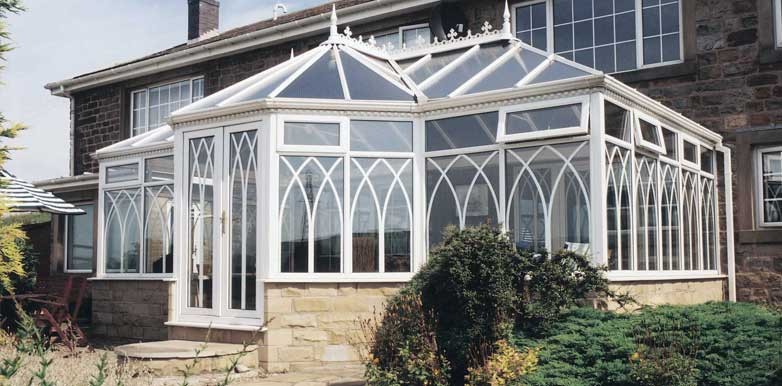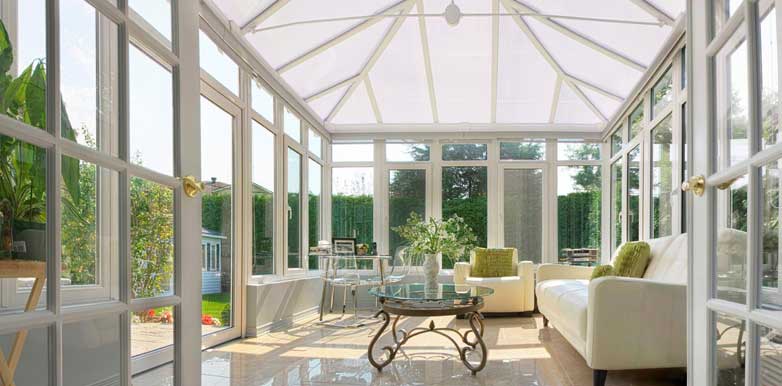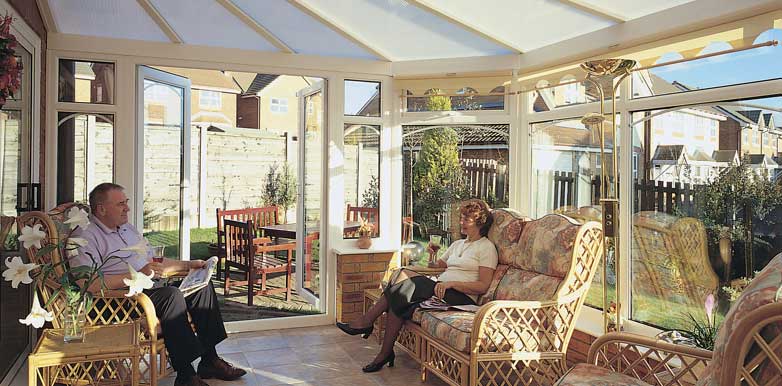How Can I Insulate My Conservatory?

Conservatories are excellent spaces with uses that extend across the entire year, but it can often prove problematic keeping in control of their temperature. The question ‘how to best insulate a conservatory’ is one that is commonly asked across the country, and there are plenty of different answers.
This guide will hopefully help clear up some of the most widely discussed solutions to conservatory insulation problems, looking into what each option can offer you and your property, and how easy they are to acquire, install, and maintain.
Conservatories: A National Favourite
Conservatories are some of the most popular structures in the country, found on or around 18% of homes in the UK. They are fantastic for enjoying the view of your garden or the weather without having to expose oneself fully to the elements. Usually separated from the rest of the property by a door, they are usually exempt from building regulations (although it is always best to check with your local planning office before taking on any construction project) and can also increase the value of a house.
Conservatory roofs can be made from a wide range of materials, but two of the most popular are glass and polycarbonate. Glass is more popular among those looking to achieve a bespoke, traditional appearance with their conservatories, while polycarbonate is often cheaper, hardier and easier to install.

The Insulation Problem
Despite the popularity of conservatories, there is one problem that tends to plague them up and down the country – insulation. We are fast approaching the coldest time of year, and around this winter season conservatories can become almost uninhabitable due to the extremely low temperatures that can hit them.
Due to building regulations, most conservatories don’t tend to be heated, and it’s no good opening the doors between your main property and your conservatory, as often, the heat from your home will simply escape through the conservatory! Unfortunately, there really is no easy way to instantly and permanently solve an insulation issue in a conservatory, but there are nonetheless several methods you can try in order to attempt to reduce the amount of heat lost from your structure which in turn will reduce your energy bills.
How Can I keep My Conservatory Warm?
Luckily, there are a couple of ways you can combat heat issues within your conservatory, with some proving to be more permanent solutions than others.
With inconsistent conservatory temperature a year round issue, becoming incredibly cold in winter and extremely hot in the summer, it is best to look at options that will provide a year-long service, rather than simply opting for quick fixes such as simply placing lots of heaters or fans in your conservatory (which will prove to be an extremely expensive and ineffective option).
Below we have provided some of the more popular solutions for controlling conservatory temperature, with a few of the benefits and some other information to bear in mind when deciding on the best way to tackle your insulation issues.
Blinds and Curtains
Installing blinds or curtains into your conservatory roof may seem like a strange decision when looking for a solution to conservatory insulation that will benefit you all year round, but these accessories are surprisingly useful at all times of year. Obviously, they will prove to be the most beneficial in summer, shielding your conservatory from the summer sun and reducing the effect it has on your conservatory considerably.
Blinds and curtains can be extremely helpful in winter as well, however, especially those made from fabric. Many fabrics are excellent at absorbing heat, and this will come in particularly useful in your roof as heat tends to rise and escape via the glass/polycarbonate in the upper panels and sheets of your conservatory. Both curtains and blinds can therefore act as a net of sorts to help prevent the heat from leaving straight away.
Both blinds and curtains can to prove to be surprisingly versatile when it comes to roof insulation throughout the year and serve as a relatively cost-effective and aesthetically pleasing aid in the maintaining of temperature in your conservatory.
External Covering
Some homeowners have resorted to covering their conservatory roofs with materials such as felt. This has multiple benefits such as aiding in the cooling of the conservatory in those warmer summer months by blocking out the sun and preventing it from heating the room as intensely as it would do if the conservatory was to be fully exposed.
External covering can also be useful in preventing the sound of rainfall on your roof, which can be extremely loud, especially on polycarbonate. The felt will absorb the rain, which may become heavy on top of your roof, so ensure you are aware of the weight capacity of your roof.
Felt is low in cost, and can be easily obtained, but this will serve far better as a temporary solution, shading your conservatory in warmer months, or serving as an extra layer of insulation in the colder months. This happens due to the fibres in the felt effectively trapping heat as it attempts to escape into the air. Many different fabrics have this ability but felt proves to be one of the most cost-effective when exposed to outside weather.
Polycarbonate
Polycarbonate sheeting is one of the most popular roofing options for conservatories, rivalled only by glass. While glass is considered more elegant with a classical aesthetic, polycarbonate is often far easier to purchase, handle and maintain. Impact resistant and long-lasting it continues to grow in popularity among many conservatory builders and owners.
One of the key benefits that polycarbonate has over glass is its ability to serve as a far better insulator, with the material conserving more heat as opposed to letting it escape. However, many of the more basic polycarbonate sheets won’t be enough to properly insulate your conservatory, and it may be necessary to upgrade to thicker sheeting as the more layers the polycarbonate has, the more insulation it provides. Upgrading your polycarbonate sheets is a process that may not take as much time, money and resources as it may first sound.
Many conservatories will have been constructed with glazing bars that can expand beyond their current accommodation levels and may therefore be able to accommodate thicker sheets. Not only this, but polycarbonate production is an ever-changing industry, with manufacturers improving their production techniques all the time, and they can now last for over a decade without requiring replacement. Many manufacturers also offer warranties, giving you piece of mind about your polycarbonate roof for long after it has been installed.

Does Putting a Roof on My conservatory Make it Warmer?
For many years, it wasn’t possible to put heavier roofing options such as slate or clay tiles onto conservatory roofs due to the much lighter, more fragile frames many of these structures possess. However, recent years have seen advances in production methods and technologies, and now there are many different synthetic tiles and shingles on the market that are considerably lightweight.
Tiles also have the advantage of having brilliant insulative properties, and, although you will need to spend money to replace your current conservatory roof, you will reap the rewards of not only having a conservatory that you can use all year round but also seeing a drastic reduction in your heating bills. Although research into how building regulations may affect your ability to carry out the process is an absolute necessity, the results of changing the material from which your conservatory roof is made cannot be understated.
Tiles also serve as a precious source of shade in the summer, staving off the strongest sun rays-although if you do want to make sure more light comes in it is quite possible to include rooflights when changing your roofing material. Roofs made from synthetic tiles are growing in popularity across the country, and it really isn’t hard to see why, they are arguably more insulative than a glazed roof.
We have a range of synthetic tiles and shingles here at Roofing Megastore, so if you like the sound of a beautiful synthetic tiled conservatory roof, please do have a look through our extensive ranges and find the best material and style for you.
Which is the Best Option for Me?
As you can probably tell, the best solution really depends on your circumstances. If you’re looking for a temporary fix to your insulation problem, externally covering your roof can be a quick, if far from permanent, fix. Meanwhile, polycarbonate sheeting upgrades can prove to be a good investment if you are willing to part with the time and money.
Finally, the most effective, long-term solution (if you have done the research to find out what planning permissions you may need for this) is roof replacement, which has been proven to be a very effective method of improving the insulation of your conservatory, with durable, effective synthetic tiles and shingles now more affordable and easier to install than ever before.
There are many factors that may attract or repel you from these options, and it’s always recommended to do your own research and enquire for any advice you may need. Conservatories are excellent structures that are great to use throughout the year, so it is always best to equip them so they can suit your needs as best as possible, and that includes getting the ideal roofing system to help ensure your comfort in your conservatory across all seasons, no matter the weather.
Have More Questions About Conservatory Roof Insulation?
The team here at Roofing Megastore are eager to help you out with any questions you may have about our products or even your own projects. Simply give us a call on 01295 565565, email us or chat to us online, and we’ll give all the advice we can!